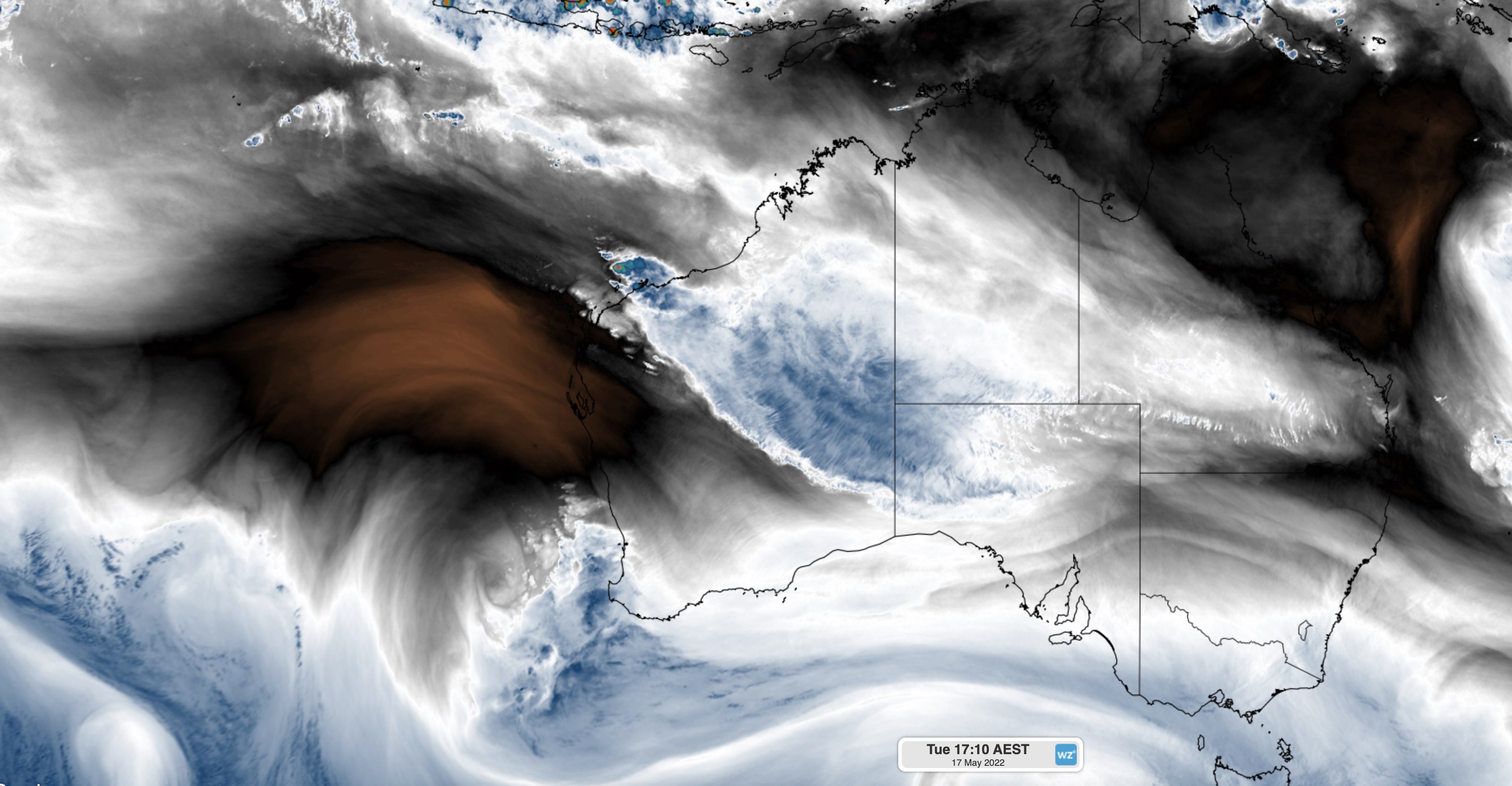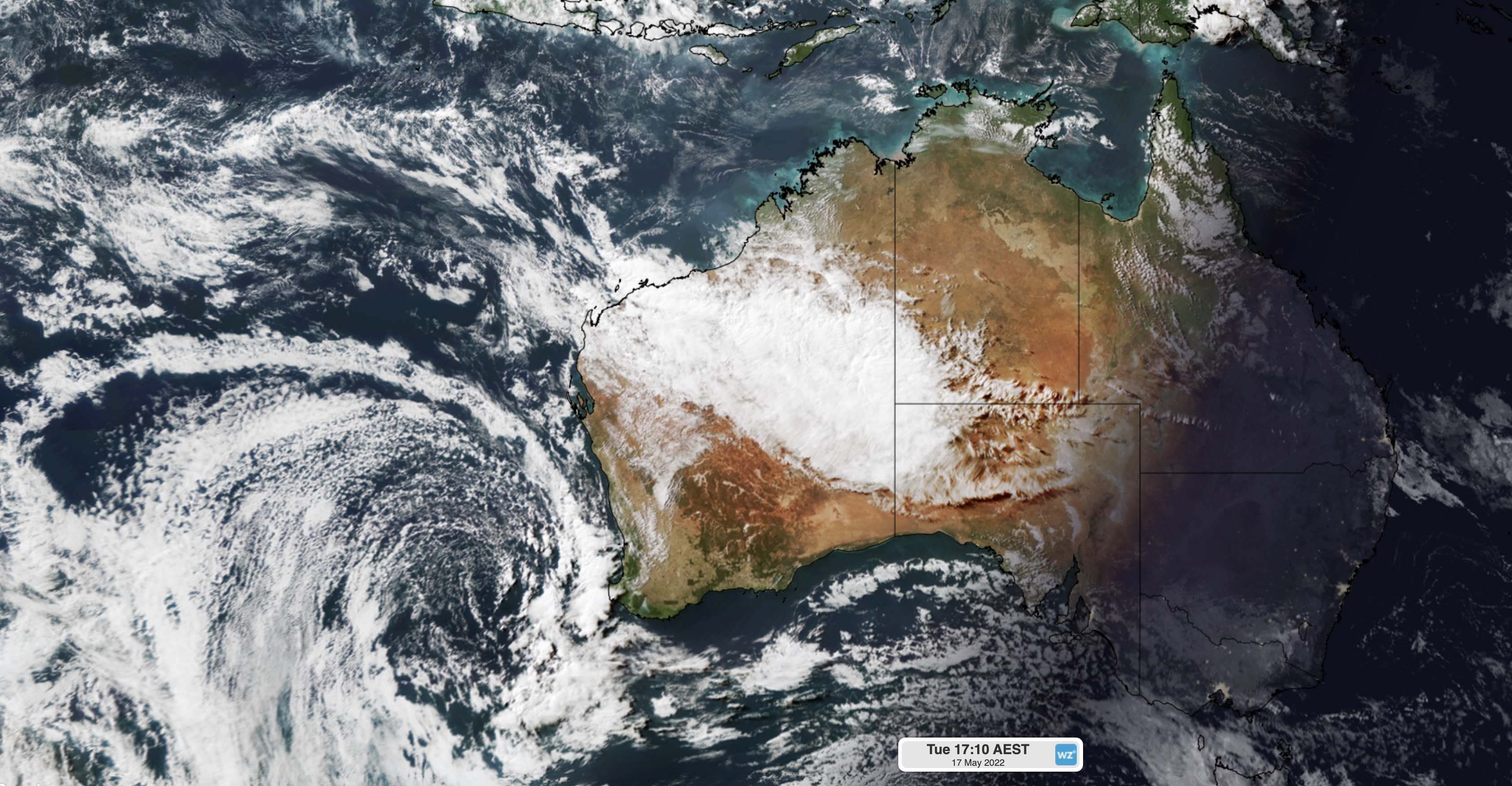WATCH the birth of a northwest cloudband
Satellites have captured a northwest cloudband developing over WA during the last two days, showcasing a feature that will play a big role in Australia’s weather in the coming months.
Northwest cloudbands are, as the name suggests, cloudbands which stretch across Australia from the northwest. These cloudbands form when moisture from the tropical Indian Ocean is carried over northwestern Australia and travels towards the nation’s southeast, typically along a low pressure trough or cold front.


Image: Enhanced water vapour (top) and visible true colour (bottom) satellite images of a northwest cloudband developing over WA on Tuesday, May 17.
Over the course of their life, which usually lasts for several days, northwest cloudands can carry tropical moisture thousands of kilometres across Australia and deliver rain to part of every state and territory.
This week’s cloudband is forming as tropical moisture from the Indian Ocean is dragged south by a passing upper-level trough. This type of weather pattern becomes more common in and around winter, with northwest cloudbands typically occurring between March and October and reaching a peak frequency from April to September.
The video below shows the development of this northwest cloudband on Monday and Tuesday.
This week’s northwest cloudband dumped 73 mm of rain in three hours at Onslow and 58 mm in two hours at Thevenard Island on Tuesday. Heavy rain will continue to spread from the Pilbara across the state’s Interior on Tuesday night into Wednesday, where flooding is likely. A severe weather warning and flood watch have been issued for these areas as a result.
Looking ahead, a negative Indian Ocean Dipole (IOD) will likely increase the frequency and strength of northwest cloudbands over Australia through the middle of the year. This increases the risk of flooding during winter, particularly in areas of the country that have been wetter-than-average in recent months.